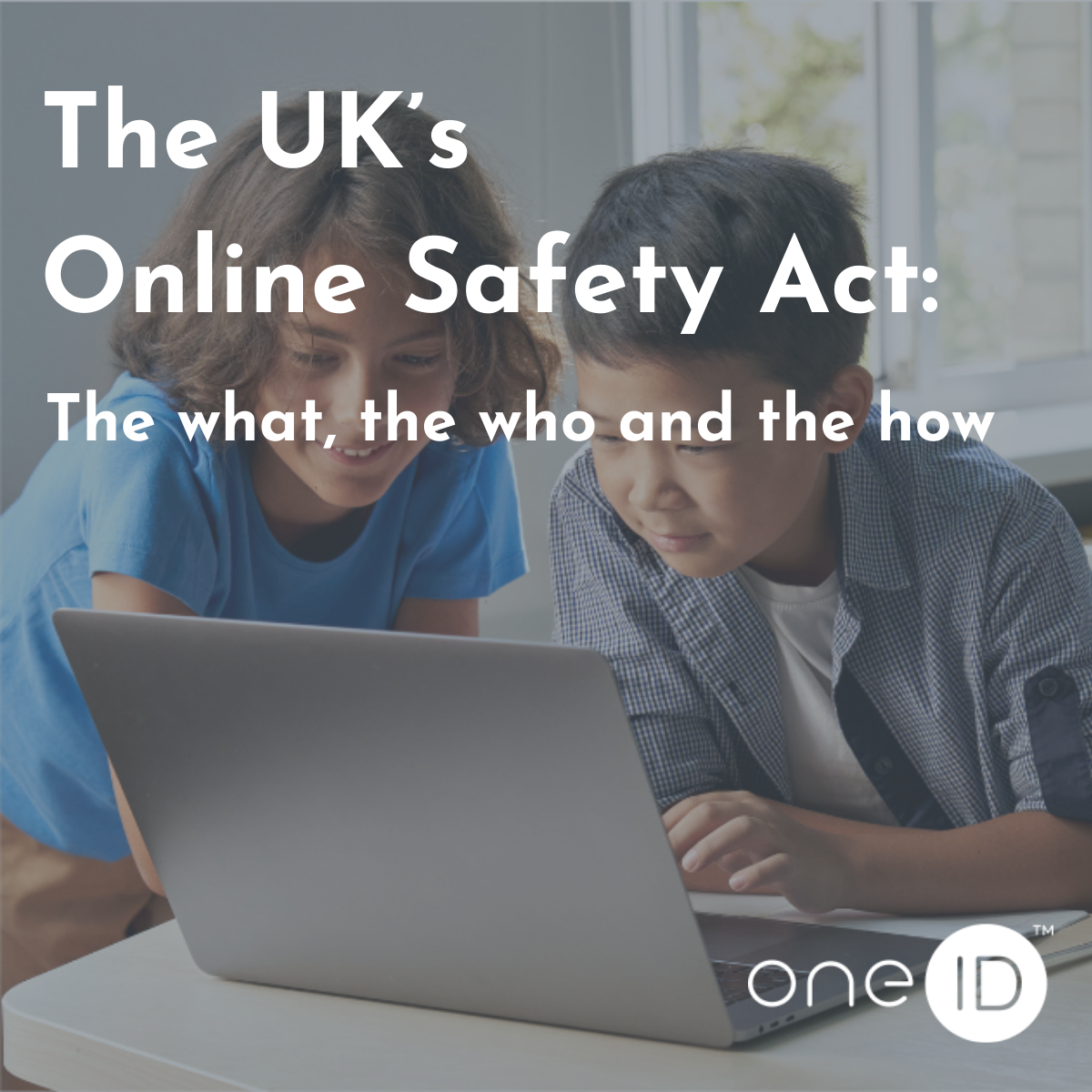The introduction of the Online Safety Act (OSA) marks a significant milestone in protecting children from harmful content. As online businesses and content platforms try to understand and navigate this crucial and wide-reaching regulation, we believe there’s an opportunity to turn this compliance requirement into a key differentiator. The OneID® OSA Knowledge Hub is designed to give you resources, insights, and solutions to help you stay compliant while enhancing user trust and experience.
As broad as an act the Online Safety Act is, businesses like yours need a clearer view of if and how the new regulation will affect them.
Take the Ofcom questionnaire, ‘Does the Online Safety Act apply to your service?’ to understand how the regulation could impact your business. It’ll just take a couple of minutes.

User-to-user services must complete a number of steps to comply with the Online Safety Act.
Implementing a highly effective age assurance measure like OneID® can help save time and hassle, supporting compliance with the duties.
Illegal Harms Risk Assessment: What’s the likelihood of users coming across illegal or harmful content on your service?
This could include your service’s user base, design elements, algorithms, and business model. This information can help to evaluate the likelihood and impact of these harms and categorise them as low, medium, or high risk.
To reduce the risks of harm, implement measures such as content moderation, user reporting tools, or highly effective age assurance. You should also document these processes and their outcomes.
Monitor the effectiveness of safety measures and review or update them annually or whenever significant changes occur to risks or your service.
Children’s Access Assessment: The CAA is a two-stage process that seeks to determine if children are on your service, or are likely to be attracted by your service. Your Children’s Access Assessment will determine whether or not you need to complete the Children’s Risk Assessment (CRA).
You can only conclude that children cannot access your service if you have implemented a highly effective age assurance (HEAA) measure like OneID®. If you have HEAA, you can record it in your assessment, and you don’t need to proceed to stage 2 and further assessments.
Assess whether a significant number of children are using the service and/or whether it is likely to attract a significant number of children.
If the child user condition is met, i.e., a significant number of children access the service, then you must undertake the Children’s Risk Assessment.
Children’s Risk Assessment: If children can access your service, are you providing them with age-appropriate experiences?
Assess specific types of content, considering how features like direct messaging or recommender systems may increase exposure to harm.
Consider your service’s characteristics, design, and user protections, including cumulative harm risks. Assign risk levels and assess age-specific vulnerabilities.
To protect children from harm on your service, document the outcomes of your risk assessment and follow Ofcom’s draft Children’s Safety Codes for guidance on content moderation, user tools, and reporting.
Ensure updates are made after significant changes by Ofcom or your service. Smaller organisations can improve oversight by involving a senior manager responsible for online safety.
Complying with the Online Safety Act doesn’t have to create friction, data oversharing, or user drop-off. See how you can easily verify users and set up payments within seconds.
A lot has been said about age verification since it became mandatory as part of the requirements under the Online Safety Act. 60 days later, what is the feedback from the ground? We'll uncover in our upcoming webinar.
Hear from Illuminate Tech, AVPA, NSPCC, and OneID® - on what have businesses and solution providers seen, what do users expect, what's the reality about VPNs and dropouts, and more.
Don't miss it if you are a dating platform, gaming site, social media service, streaming or eCommerce site.

Discover how the Online Safety Act will reshape digital regulation in the UK, who it impacts, and how you can implement a seamless, privacy-preserving age verification solution to ensure compliance without compromising user experience.

The Online Safety Act will change how online businesses and services operate in the UK. However, as businesses look for simpler and seamless ways to verify customers and comply with the OSA, OneID®'s highly effective age verification technology can turn this challenge into an opportunity.
Our paper, Turn Compliance into Competitive Advantage with OneID®, explores the Online Safety Act, demonstrates compliance, and shares how OneID®'s age verification solutions can enhance user experience and improve business performance.

The Online Safety Act (OSA) requires dating services to implement stringent identity and age assurance measures. Sizzl, a dating platform prioritising safer experiences, turned this need for compliance into a competitive advantage. Here's how.
.png)
The Online Safety Act is centred on the Children’s Access Assessment and the very simple question: ‘Is it possible for children to access your services?’ Your response to the assessment determines what you should do to comply with the OSA. In our blog, we break down the assessment, when it should be done, and the easy way to meet compliance.

Email Adrian Field, our Director of Market Development, who works closely with policymakers and regulators and helps businesses understand how this new regulation will shape the UK’s digital future. adrian@oneid.uk
